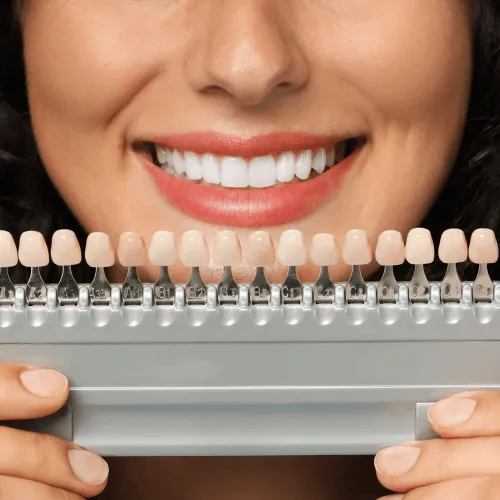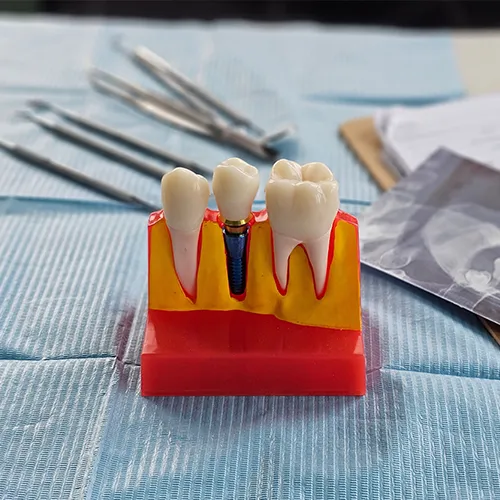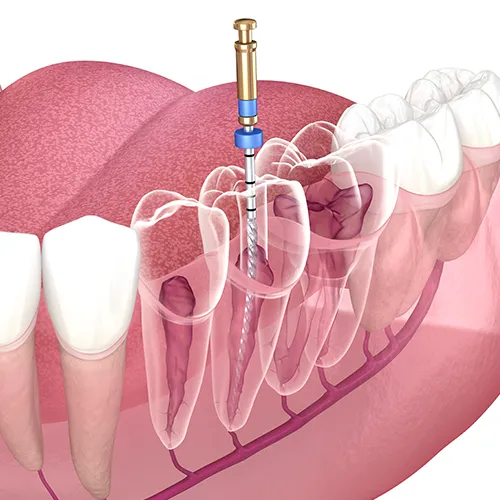General Dentistry
Bleeding Gums Aren’t Normal. Here’s What Your Mouth Might Be Trying to Tell You
Ever noticed a streak of pink in the sink after brushing? A dab of blood on your floss? It’s easy to brush off bleeding gums as a sign of brushing too hard or flossing too vigorously. But often, it’s your mouth trying to warn you that something deeper is going on.
At Akemi Dental Specialists, we see this more often than you’d think. And while bleeding gums may seem minor, they’re usually the first red flag in a longer story: one that could lead to gum disease, tooth loss, and even complications beyond the mouth if left unchecked.
Let’s unpack what might be causing your gums to bleed and when it’s time to take it seriously.
Why do my gums bleed when I brush, and is this early periodontitis?
In most cases, yes. Bleeding during brushing or flossing is one of the earliest signs of gingivitis, the mildest form of gum disease. Gingivitis happens when plaque builds up along your gumline, causing inflammation. If this inflammation is left untreated, it progresses to periodontitis, a more advanced condition that leads to bone loss, gum recession, and even tooth loss.
The bleeding isn’t caused by brushing too hard (unless you're truly scrubbing with force). It’s usually a result of your body trying to fight off the bacteria irritating your gums. Your immune response increases blood flow to the area, making the tissue more sensitive and prone to bleeding.
Here’s how the progression typically goes:
- Plaque builds up on the teeth and along the gumline.
- Gums become inflamed (gingivitis). They may bleed when you brush or floss.
- Gums begin to recede and form pockets. This marks the transition to periodontitis.
- Bone begins to deteriorate, and teeth may become loose or shift.
Early gum disease is reversible with proper oral care and professional cleaning. But once it advances to periodontitis, the damage can’t be undone, only managed.
So if your gums are bleeding, don’t ignore it. It’s not “just how your gums are.” It’s inflammation. And inflammation in the mouth is never normal.
How can I treat bleeding gums at home before seeing a periodontist?
If you’ve just noticed bleeding and there’s no pain or swelling yet, that’s a good sign. You’ve likely caught it early, and there are a few things you can do at home right now:
1. Brush and floss consistently (but gently)
A lot of people avoid flossing when they see blood, but that only makes things worse. Gently floss once a day to remove the plaque between your teeth. Use a soft-bristled toothbrush and brush in small circular motions rather than aggressive back-and-forth strokes.
2. Rinse with warm salt water
A simple salt water rinse (½ teaspoon of salt in a cup of warm water) can reduce inflammation and kill bacteria. Use it after brushing or before bed to calm irritated gums.
3. Use an antibacterial mouthwash
Choose a mouthwash labeled “antibacterial” or one that contains chlorhexidine (you may need a prescription for this). Avoid alcohol-based rinses, as they can dry out your mouth and make inflammation worse.
4. Stay hydrated and watch your diet
Drink plenty of water, and reduce sugary snacks and acidic drinks. A balanced diet rich in vitamin C and calcium supports gum health and helps your body repair inflamed tissues.
5. Stop smoking or vaping
Smoking reduces blood flow to the gums and makes it harder for your body to fight infection. It also hides the signs of gum disease, like bleeding and inflammation, making it harder to detect until it’s advanced.
That said, home care only goes so far. If bleeding continues for more than a week despite your best efforts, it’s time to see a periodontist. Bleeding gums should never become your “normal.”
What are the warning signs of periodontitis besides bleeding gums?
Bleeding is often the first sign. But as gum disease progresses, it brings along a set of symptoms that can sneak up on you if you’re not paying attention.
1. Persistent bad breath
If brushing and rinsing doesn’t get rid of your bad breath, bacteria below the gumline could be the cause.
2. Gums that are red, swollen, or tender
Healthy gums are pale pink and firm. Inflammation, puffiness, or soreness is a clue that your immune system is in overdrive.
3. Gum recession
If your teeth are starting to look “longer,” it’s probably because the gum is pulling away, a sign of attachment loss.
4. Loose or shifting teeth
This is a late-stage sign and usually means there’s bone loss under the surface. You might notice that your bite feels different or your teeth don’t line up the same.
5. Pus around the gums
Any sign of pus or a foul taste in your mouth is an emergency. This indicates infection that requires immediate care.
The scary part about periodontitis is that it often doesn’t hurt until it’s already done serious damage. That’s why bleeding, something most people dismiss, is such a vital early warning sign. It’s your body whispering before it has to scream.
Why Periodontists Are Key to Saving Your Smile
A general dentist can spot the early signs of gum disease, but if your condition has progressed to periodontitis, you’ll need a specialist, a periodontist, to manage it effectively.
At Akemi Dental Specialists, our team focuses on preventing, diagnosing, and treating gum disease at every stage. We offer:
- Deep cleanings (scaling and root planing)
- Non-surgical treatments for early to moderate gum disease
- Surgical treatments for advanced cases, including bone grafting and gum regeneration
- Ongoing maintenance therapy to prevent relapse
We also use advanced diagnostic tools to assess the health of your gums and supporting structures, so we’re never guessing.
Most importantly, we take the time to explain what’s happening, and what you can do about it, in plain language.
What Happens If You Don’t Treat Bleeding Gums?
It’s tempting to ignore bleeding gums, especially if there’s no pain. But here’s what ignoring it can lead to:
- Chronic bad breath
- Gum recession and tooth sensitivity
- Tooth mobility and eventual tooth loss
- Higher risk of heart disease, diabetes, and stroke
Yes, you read that right. Multiple studies have shown that chronic gum inflammation is linked to systemic health problems. The mouth is not separate from the rest of the body.
Treating bleeding gums early isn’t just about saving your teeth. It’s about protecting your overall health.
When to Book an Appointment
If your gums have been bleeding for more than a few days, or if you’re noticing other signs like gum tenderness, swelling, or bad breath, it’s time to come in.
Even if you’re unsure whether it’s serious or not, it’s always better to check. We’ll take a close look, walk you through what we see, and recommend the best next step, whether that’s a deep cleaning, a home care routine, or something more advanced.
You don’t have to live with bleeding gums. And you definitely don’t have to wait for things to get worse before taking action.
Let’s Get Your Gums Healthy Again
At Akemi Dental Specialists, we take gum health seriously. If you're seeing signs like bleeding, tenderness, or bad breath, we encourage you to schedule an appointment today. Early intervention makes all the difference, and your smile will thank you later.























